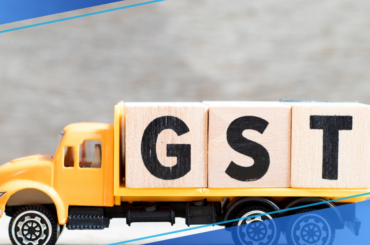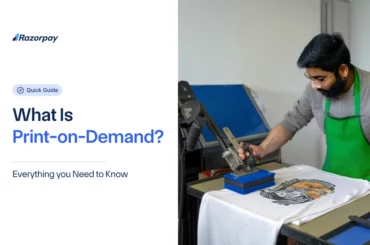Many business metrics are used in the customer success niche, and Customer Acquisition Cost is an important metric. With the emergence of internet companies and digital marketing campaigns, CAC has been growing as a metric since it has become much easier to track every dollar spent.
Traditionally, businesses indulged in shotgun marketing strategies. But today, companies engage in extremely targeted campaigns and track every stage of their customers as they progress from potential leads to long-term loyal customers. Moreover, if you plan to expand your business and manifold your revenue, CAC is one important metric to account for.
Table of Contents
What is Customer Acquisition Cost?
Customer Acquisition Cost is the cost of converting a potential customer into a loyal customer. Through CAC, you can compare the amount of money you have spent convincing clients on buying your product or service to the number of customers you have gained.
In simple terms, the lesser the CAC of your business, the better is your business performance. It means you are spending your money the right way, and you can expect a good Return on Investment.
Importance of Customer Acquisition Cost (CAC)
For an organisation Customer Acquisition Cost (CAC) is of significant importance primarily because it determines how costly, and also how profitable, growth is for your company. For example, if your CAC is too high relative to your customer lifetime value, then growth won’t be sustainable because acquiring customers will cost you a lot more than the profit and revenue you generate from each customer.
How to Calculate Customer Acquisition Costs?
The basic formula designed to calculate CAC is:
CAC = Expenses incurred to attract clients/Number of clients acquired
The major two expenses accounted for while calculating Customer Acquisition Cost is the marketing cost required to generate a lead and the sales cost required to convert that lead into a paying customer.
In order to accurately calculate CAC, determine the time duration that you wish to evaluate. Post that, add the total costs from the marketing function, then add total expenses from the sales division. Also, get hold of the number of clients you have acquired during the decided time frame. Add the total expenses from marketing and sales and divide the result by the total number of acquired clients.
For example, you had a total marketing expense of INR 15000 and INR 12000 on sales expenses. Furthermore, let’s say you acquired 900 clients in one year. Using these values, the CAC for your company would be = (15000+12000)/90 = 300
Customer Acquisition Cost Examples
To understand Customer Acquisition Cost (CAC) better, here are a few examples of how CAC can vary across different industries:
E-commerce: In the online retail industry, CAC can include expenses related to digital marketing campaigns, advertising costs on social media platforms, search engine optimization efforts, and influencer collaborations. For example, an e-commerce company might spend $50 on advertising and marketing efforts to acquire a customer who makes a $100 purchase, resulting in a CAC of $50.
Software as a Service (SaaS): SaaS companies often incur costs related to lead generation, content marketing, sales team salaries, and software development. For instance, if a SaaS company spends $10,000 on marketing and sales efforts in a month and acquires 100 new customers, the CAC would be $100 per customer.
Subscription Services: Subscription-based businesses, such as streaming platforms or meal kit delivery services, might invest in advertising, free trial offers, and referral programs to acquire new subscribers. If a subscription service spends $500,000 on marketing in a year and gains 10,000 new subscribers, the CAC would be $50 per subscriber.
These examples illustrate how CAC can vary based on the industry, business model, and specific customer acquisition strategies employed by companies. Monitoring and optimising CAC is essential for businesses to ensure efficient and cost-effective customer acquisition.
What is Customer Lifetime Value (LTV)?
Customer Lifetime Value is the revenue that a customer will generate during their lifetime. Most businesses use 1, 3, or 5 years for LTV calculation. This is one way to analyze acquisition strategy and estimate marketing costs. Let’s look at an example:
Customer Lifetime Value ( CLV) = Average monthly revenue per customer * Gross margin per customer / Monthly churn rate
The numerator value represents the average monthly profit per customer, and dividing by the churn rate sums the geometric series indicating the chance the customer will be around in future months. For example: $200 avg monthly revenue * 20% margin / 5% churn rate = $800 LTV
How to calculate LTV/CAC, and why is it useful?
The LTV/CAC calculation will help you find the answer to the most important question – Will the customer you’re acquiring contribute more revenue than they cost?
This ratio indicates the relativeness of a customer’s value and the expense behind acquiring them. By analyzing this ratio, you can evaluate whether you are on the right path and spending your money on the right customers. Ideally, the LTV/CAC ratio should be 3:1, i.e. the projected revenue generated by a customer should be three times the cost of acquiring them. In this case, LTV/CAC = 800/300 = 2.67
Average customer acquisition cost by industry
Below is the comparison chart to compare two types of CACs for 15 industries. Organic CAC includes SEO and organic social, whereas Inorganic CAC includes SEM/PPC and paid social.
| Industry | Average Organic CAC | Average Inorganic CAC |
| B2B SaaS | $205 | $341 |
| Business Consulting | $410 | $901 |
| Construction Supply | $212 | $486 |
| Consumer E-commerce / Retail | $87 | $81 |
| Financial Services | $644 | $1,202 |
| Higher Education & College | $862 | $1,985 |
| Industrial IoT | $557 | $788 |
| Law (Business / Commercial) | $584 | $1,245 |
| Luxury Real Estate | $660 | $1,185 |
| Manufacturing & Distribution | $662 | $905 |
| Medical Device | $501 | $755 |
| Oil & Gas | $710 | $1,003 |
| PCB Design & Manufacturing | $330 | $658 |
| Pharmaceutical | $196 | $160 |
| Point of Sale | $680 | $841 |
How can you improve customer acquisition costs?
Our marketing and sales campaigns can be more effective. You can improve customer loyalty and increase the average ticket size if we adopt these ways to improve the overall CAC:
-
Gather Customer Feedback and enhance user value:
Before launching any product or add a minor new feature to your product, always collect feedback from your target audience. This way, you know what they expect from your brand and what will sell exactly. Try to give the customers what they want and have expressed interest in. It might be implementing something to improve the current product for greater positioning or developing new ways to make money from existing customers.
-
Improve on-site conversion metrics:
Use Google Analytics, set your goals, and perform A/B testing with advanced checkout systems to minimize the shopping cart abandonment rate. Also, focus on improving your SEO, landing page, website loading speed, and other factors contributing to your overall site performance.
-
Implement Loyalty Programs and customer rewards:
If you get a client from an existing client’s referral, the CAC of the client is zero. It means it is essential for you to maintain healthy relationships with your existing customer base as they can be the best advocate for your services. Hence, build a loyalty program and deploy a reward system to keep your clients happy and engaged.
-
Optimize your sales and marketing funnel:
You need to quantify each step of the process to understand how many visits converted into leads, how many leads converted into opportunities, and ultimately how many opportunities converted into sales. You may also consider reducing the length of a sales phase, and it will automatically increase the number of sales you can develop over a while.
-
Implement Customer Relationship Management:
All companies that enjoy repeat buyers have implemented some form of CRM. Using a CRM facilitates better collaboration among teams and streamlines your normal workflow. CRM platform offers various benefits, including improving customer relationships, reducing churn, cloud-based sales pipeline management, automated email lists, and other techniques that build customer loyalty.
Small business owners often excel at customer retention, and several of their customers are “regulars” or friends. For small businesses, an essential addition to customer retention is growing your customer base. There are innumerable tactics that can be employed by small businesses to improve customer acquisition:
- Create social media pages for your business
- Build a website to showcase your products or services
- Focus on Search Engine Optimization
- Run a referral program
- Create high-quality content regularly
- Attend local trade shows
Final Thoughts
It is essential to measure and track the Customer Acquisition Cost from both a company and an investor point of view. Investors use CAC to assess whether a company is and will continue to be profitable. Businesses can use this metric to understand how they are performing financially. They can allocate resources and funds, concoct marketing strategies and campaigns, and devise their hiring and compensation process.
Frequently asked questions
Why does CAC matter?
CAC (Customer Acquisition Cost) matters because it measures how much a business spends on acquiring each new customer. By understanding CAC, businesses can evaluate the efficiency and profitability of their marketing and sales efforts, make informed decisions, and ensure long-term sustainability.
What factors affect CAC?
Several factors can impact CAC, including the marketing channels used, advertising and promotional costs, target audience demographics, competition level, sales team efficiency, customer retention rates, and the overall effectiveness of the marketing strategy employed by the business.
What is a good CAC?
A good CAC is subjective and depends on various factors such as the industry, business model, and customer lifetime value. In general, a lower CAC is desirable, indicating that the cost of acquiring customers is lower relative to the revenue they generate. However, what constitutes a “good” CAC will vary based on individual business circumstances.
What is the average CAC for startups?
The average CAC for startups can vary significantly across industries and markets. However, it is common for startups to have higher CAC compared to established businesses due to the need to build brand awareness, acquire customers, and overcome initial market challenges. Benchmark data suggests that startups often have CAC ranging from a few hundred to a few thousand dollars.




![GST State Code List & Jurisdiction 2025 [Updated List] GST State Codes](https://d6xcmfyh68wv8.cloudfront.net/learn-content/uploads/2024/02/GST-State-Codes-370x245.webp)
